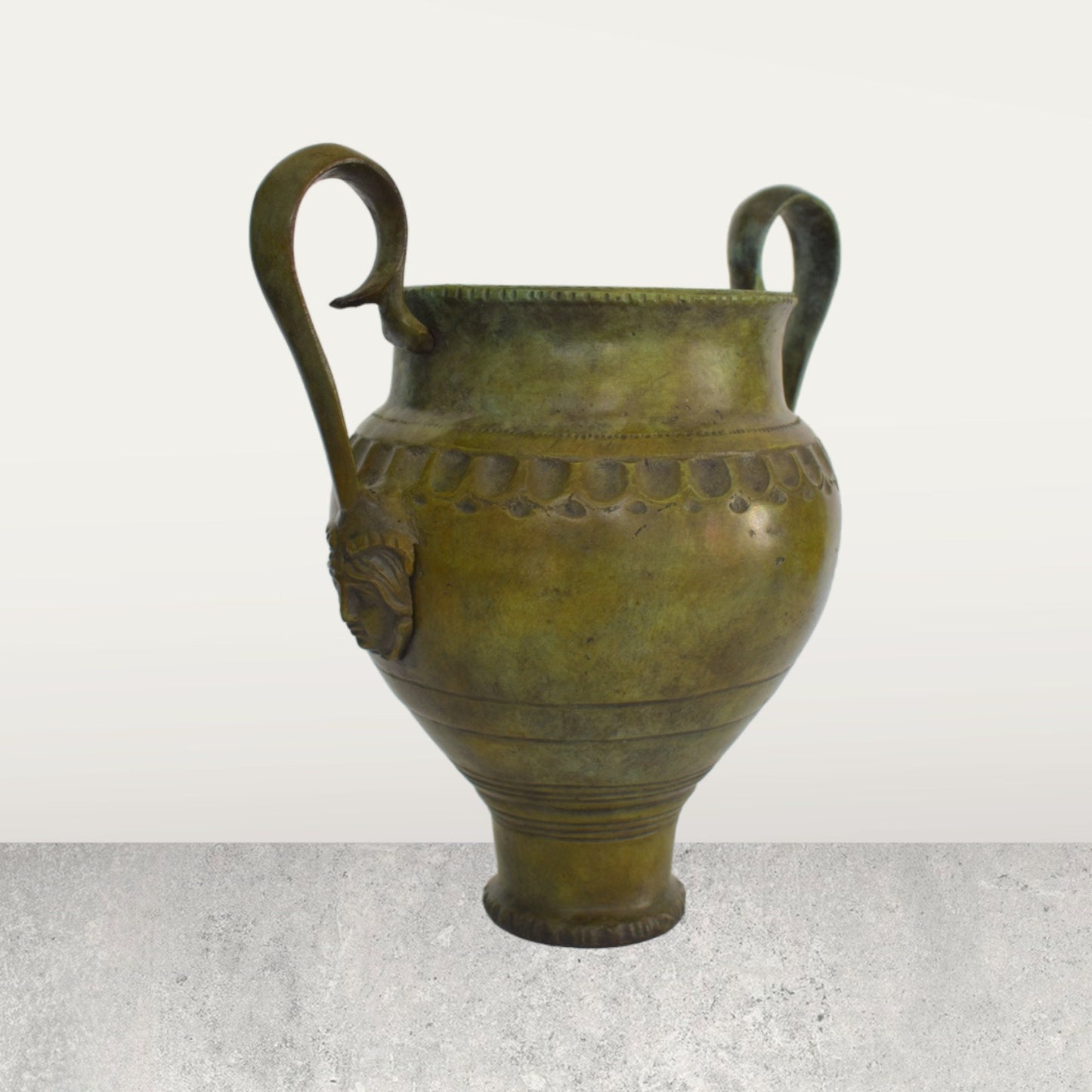Gallery Demeter
Ancient Greek Vessel - Museum Replica - pure Bronze Sculpture
Ancient Greek Vessel - Museum Replica - pure Bronze Sculpture
Regular price
€599,90 EUR
Regular price
Sale price
€599,90 EUR
Unit price
per
Tax included.
Shipping calculated at checkout.
Couldn't load pickup availability
Item Specifics
Condition: New, Made in Greece.
Material: Pure Bronze
Height: 24,5 cm - 9,6 inches
Width: 23,5 cm - 9,3 inches
Length: 17,5 cm - 6,9 inches
Weight: 3650 g
In ancient Greece, vessels were made in great quantities and in diverse materials, including terracotta, glass, ivory, stone, wood, leather, bronze, silver, and gold. The vases of precious metals have largely vanished because they were melted down and reused, but ancient literature and inscriptions testify to their existence. Many more bronze vessels must have existed in antiquity because they were less expensive than silver and gold, and more have survived because they were buried in tombs or hidden in hoards beneath the ground.
Bronze is an alloy of copper and tin, sometimes combined with small amounts of other materials, such as lead. Copper was widely available in the ancient Mediterranean, most notably on the island of Cyprus. Tin was scarcer; it was available both in the East, in Anatolia, and in the distant West, in the British Isles. Herodotus, a Greek historian from the fifth century B.C., refers to the British Isles as the “tin islands”. Tin combines with copper to produce a metal alloy that is stronger and easier to shape than copper alone and also gives the otherwise reddish copper a golden hue. The ratio of copper, tin, and added materials can be manipulated to produce a range of aesthetic effects. In his Natural History (34:3), Pliny writes that bronze made in Corinth was particularly renowned for its fine coloring. Today, most surviving bronzes exhibit a green patina, but in their original form, bronze vessels would have had a golden sheen.
Bronze vases were made primarily with a combination of two metalworking techniques. The bodies of the vases usually were made in a process called “raising,” which involved repeated heating, hammering, and cooling. The handles, mouths, and feet of the vessels often were cast from a mold. First, the craftsman made a wax model and covered it in clay. The clay was fired, and at the same time, the wax melted out. Molten bronze was then poured into the cavity of the clay mold. After cooling, the clay mold was removed and the surface of the bronze was polished smooth. The wax model often could be shaped into animal or figural motifs or decorated with geometric or floral patterns before firing. The craftsman was able to refine the ornamental additions with cold-work after firing. The decorative motifs sometimes were enhanced with the addition of other materials; silver accents were especially popular. The cast parts were attached to the hammered body of the vase with rivets, solder, or a combination of the two methods. In many cases, the thin, hammered bodies of the vases have disappeared entirely or are extremely fragmentary because of the corrosive effects of the soil in which they were buried. The solid handles, mouths, and feet have fared better.
Bronze vessels were made in a wide range of shapes over a long period of time. Many of the earliest vessels, dating to the ninth and eighth centuries B.C., were tripods, which are three-legged stands that supported large cauldrons; sometimes the two parts were made together in one piece. The cauldrons were originally used as cooking pots, but the tripods also were given as prizes for winners in athletic contests. The edges of the cauldrons and stands could be decorated with protomes (foreparts) of animals or mythical creatures. Powerful animals such as lions and horses appear frequently. The griffin—a fantastic beast with the body of a lion and the head of an eagle—and the sphinx—with a feline body and a human head—were favorite motifs .









